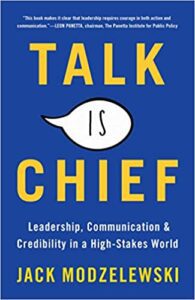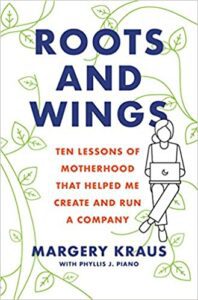
[Editor’s Note: Since many of our readers will take time off during August for a well-deserved break, we follow our July books reviews with another installment. It’s our way of wishing you a good vacation, one that affords you time to read at a leisurely pace.]
To paraphrase a maxim: ‘Every senior PR pro has a good book in them.” For the aspiring communicator-author, though, telling a compelling story while respecting non-disclosure agreements (NDAs) may be an issue.
Writing a novel is one way PR pros can mask names and situations in stories they want to tell. They create fictitious characters using snippets of real-life CEOs, SVPs and board members they’ve met.
One of the best examples of this is “Spin,” the novel centered on a PR crisis from Jim Lindheim, a former Burson-Marsteller chairman.
Similar to the HBO hit series “Succession,” Spin includes many moments, in boardrooms especially, which PR pros, especially those who have advised companies during an incident or crisis, will find disturbingly accurate.
Keep That Book Inside You
Yet writing a good novel can be daunting. As the maxim above sometimes concludes: yes, everyone has a good book in them, “and for many, that’s where it should stay.”
So, for PR pros who want to leave their marks on the profession, but not write a novel, the ‘How I Did It’ book is an option. This type of book mixes personal narrative with processes and procedures.
Since one of the goals of these books is providing tips and takeaways, it’s fine to skip names and other specifics. Describing a corporate leader as ‘a stubborn CEO who refused to admit his company was in a PR crisis’ is enough detail to illustrate the importance of prompt action from the C-suite, a key point in crisis communication.
The more successful of these books easily mix personal stories and in-depth business insights. And their authors are honest about lessons learned. They admit some of their decisions were wrong and recount them so the reader will avoid similar pitfalls. Often, they provide bullet points to remind the reader of lessons and takeaways.
Flagrant Self-Congratulations
Some authors, though, spend more time congratulating themselves than they do using their years of experience to help readers. They relate accounts of how they, seemingly single-handed, resolved major PR crises or helped companies position themselves for a more successful future. If the reader gains useful business perspectives from the story, then all the better. That’s not the writer’s top priority.
Fortunately, the books reviewed below are far less self-absorbed than the garden-variety PR How I Did It volume. Both authors are veteran PR pros with much to brag about, yet for them the work is paramount, not receiving credit as a great communicator.
 Talk is Chief: Leadership, Communication & Credibility in a High-Stakes World, by Jack Modzelewski 220 pp. Rosetta Books. $27.99.
Talk is Chief: Leadership, Communication & Credibility in a High-Stakes World, by Jack Modzelewski 220 pp. Rosetta Books. $27.99.
It’s rare when a business book is both a pleasurable read and instructive. It’s rarer when it introduces chapters with a useful quote and a funny cartoon that illustrates a takeaway.
Lucky for the reader, veteran PR pro Jack Modzelewski, once FleishmanHillard’s president, does all these and more in “Talk is Chief.”
He also was a journalist, so Modzelewski writes clear, snappy prose. And he has loads of stories and a sense of humor about himself and the profession (we’re wondering if he had the idea for some of the cartoons, which, undoubtedly, are making their way into communicators’ slide decks).
More than that, he respects the reader’s time. Modzelewski makes points quickly and often with a whiff of humor.
Of former United Airlines chief Oscar Munoz, Modzelewski writes that while the CEO survived 2017’s Dr. Dao crisis, for a period of time (before he admitted police should not have forcibly removed the doctor from a United Express flight), “his personal reputation circled the drain.”
Writing about “good communication,” Modzelewski becomes a songwriter. An effective message is “like a hummable tune. Memorable and, at its best, motivating.”
About crisis PR being like a magic act “where you redirect the audience’s attention someplace else, I can tell you that hardly ever works,” he says.
Not surprisingly, Modzelewski’s view of crisis management and communication is direct: prepare in advance, react promptly, apologize genuinely and communicate clearly how you’ll make sure it won’t recur.
In addition, he’s an adherent of the theory that we have enough technology and insight to see most crises coming, or at least have plans for them.
Part of United’s mistake was not having policies allowing ground staff to use common sense in tense situations like the Dao incident.
The 9/11 bombing? For months, Intelligence suggested something like that was possible. In what will strike readers as chilling irony, Modzelewski, writing well before COVID-19, mentions scientists have the data to predict “superbugs and other lethal pathogens causing pandemics.”
A caveat: though this book is loaded with best practices and examples that will benefit communicators, it’s not aimed at PR pros exclusively. Modzelewski identifies his target three paragraphs in: “This book is about the inseparable link between leadership and communication.”
As such, it will provide assistance when pitching a difficult CEO who doesn’t see the importance of communication. In addition, if a relative or friend asks about what you do for a living, you can cite Modzelewski for your answer.
While it might not be vital reading for experienced PR pros, Modzelewski’s book offers an interesting view. And it’s informative for PR newcomers and mid-level practitioners alike. It reads quickly, and the cartoons are good.
Leaders, Modzelewski writes, depend on their communication skills while performing 90 percent of their executive responsibilities. “Think about what leaders do...they communicate plans, goals, values, rewards and good and bad news to people.” Once that’s done, leaders expect staff to carry out their plans.
“Yet leadership cannot happen without the right communication.” Leaders who provide the who, what, when, where and how of their plans stumble when they fail to explain to staff why they are being asked to do things.
“Opportunities abound for leaders to use communication to influence urgency, energy and inspiration.” To clarify, advocate and “ignite competitive and innovative spirit. To display authenticity, confidence, integrity and humility.”
In addition to chapters on crisis and risk, the book offers tips about creating compelling narratives and the importance of the CEO’s role in bringing social and political change. The book’s final chapter is one of the best. In it, Modzelewski offers brief takes on everything from how to optimize PowerPoint presentations to repetition, big data and humor.
As you might guess, Modzelewski eschews travels-with-my-ego anecdotes that clog too many executives’ books.
Still, he knows dropping a famous name helps make a point memorable. Modzelewski writes about teaching a class of corporate-sponsored professional cyclists about media. Never lie during a media interview, a press conference or any other time, he urged the athletes.
One of them went on to have tremendous, though short-lived, success. His name? Lance Armstrong.
 Roots and Wings: Ten Lessons of Motherhood That Helped Me Create and Run a Company, by Margery Kraus, with Phyllis J. Piano 143 pp. Spark Press. $16.95.
Roots and Wings: Ten Lessons of Motherhood That Helped Me Create and Run a Company, by Margery Kraus, with Phyllis J. Piano 143 pp. Spark Press. $16.95.
You haven’t arrived as a top PR executive until you’ve published a book about your success. And in some cases, the book reads like yet another box that needs to be checked. The prose lacks personality; its lessons are boiler plate.
Within a page or two of the introduction to Margery Kraus’s “Roots and Wings: Ten Lessons of Motherhood That Helped Me Create and Run a Company,” you know this is not the case.
The writing sounds like Kraus. It’s honest and personal, as if the founder of APCO Worldwide is sitting next to you, describing how a teenage bride managed to have a successful marriage, kids, a career and, at age 38, birth a PR juggernaut that employees some 600 people in more than 35 locations around the globe.
Many people told Kraus she couldn’t have a family and a career. At times, she wasn’t sure either. In the end, though, Kraus turned the dilemma of family vs. career on its head. She succeeded, in large part, because of her family. Without the support of her husband Steve and her kids, “my career would have been impossible,” she admits humbly.
But there’s more to it. From the start, Kraus was determined to involve her family in APCO.
Fortunately, her children were beyond their formative years when APCO was in its infancy. Still, it wasn’t easy on them.
“The kids,” she writes, “had to help around the house, which they may have found very difficult or unfair, given their peers most likely had a mom at home.”
Her husband did much of the parenting.
“I didn’t drive carpools–my husband did that more–and I wasn’t always there to help with their schoolwork or be there for them.”
Societal norms of the late 1960s labelled Kraus a bad mother. School staff and others told her kids as much.
On the other hand, “my husband got to develop a special relationship with his children that men of his age rarely got to do.” And it’s something he relishes to this day, after more than 50 years of marriage.
Throughout this easily readable book, Kraus emphasizes how her home life mixed with her business philosophy.
“It’s hard not to be [a down-to-Earth and approachable boss] when, particularly in the early years, I’d go home, make dinner, do the wash, scrub the floors....”
Perhaps not so ironically, communication was integral. Kraus and Steve carefully explained to the children that their mother wasn’t abandoning them and their sacrifices were in service to something important.
When the Kraus children, through office visits, realized what their mother helped build, “they were very proud [of me]...I believe this experience made them aspire to do great things in their lives.”
Yet, she’s grounded, returning often to a humble narrative: “Listen, I don’t want to make it sound too perfect. There were days that I wanted to just pull my hair out. I didn’t know how I was going to get through it, as it seemed like everything was going wrong.”
She got through it. And PR is the better for it.
